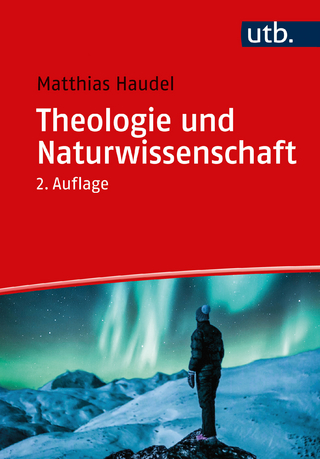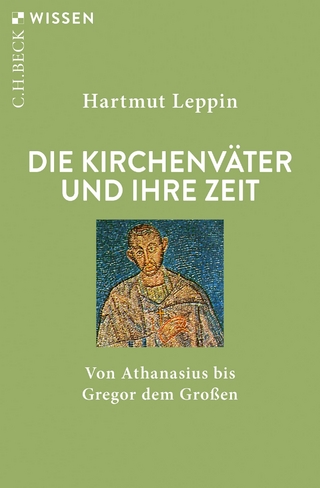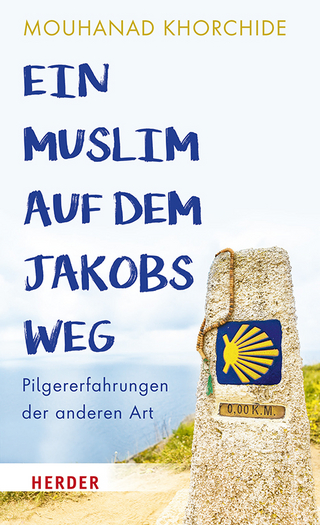
Metaphors of Eucharistic Presence
Oxford University Press Inc (Verlag)
978-0-19-758080-6 (ISBN)
The central element of this repertoire is the motif of identity--the eucharistic bread and wine are the body and blood of Christ--grounded in the Synoptic and Pauline institution narratives. From a cognitive standpoint, this metaphor can be understood both as figurative and as true in the proper sense, resolving a dichotomy that has divided the churches since the Reformation. The identity motif is complemented by four major non-scriptural motifs: representation, change, containment, and conduit.
Inaugurating a new interdisciplinary conversation, this book contributes to ongoing ecumenical reconciliation not only by addressing eucharistic presence but also by demonstrating an approach which may hold promise in other historically controverted areas. Meanwhile for cognitive linguists it offers an intriguing case study in the application of that discipline to theological questions.
Stephen R. Shaver is the rector of the Episcopal Church of the Incarnation in Santa Rosa, California. He earned his Ph.D. in Liturgical Studies from the Graduate Theological Union in Berkeley, CA, where he has taught courses in eucharistic theology and liturgical leadership.
Preface
Abbreviations
Chapter 1. Introduction: Theology in Multiple Metaphors
1.1 Liturgical theology and the embodied mind
1.2 An additive method
1.3 Metaphors of eucharistic presence
1.4 Some notes on scope and standpoint
Chapter 2. Metaphor, Embodied Realism, and Sacramental Truth
2.1 Introducing conceptual metaphor theory
2.2 More complex metaphors
2.3 Metonymy
2.4 Polysemy and prototypicality: beyond classical categories
2.5 Beyond objectivism: embodied realism for theologians
Conclusions
Chapter 3. Conceptual Blending and Two Ways of Feeding on Jesus
3.1 Conceptual blending
3.2 Asymmetric blends: bread is Jesus, Jesus is bread
3.3 The Synoptic/Pauline metaphor: this loaf and wine are jesus' body and blood
3.4 The Johannine metaphor: Jesus' flesh and blood are heavenly life-giving bread and drink
Conclusions
Chapter 4. Identity: The Great Divide
4.1 The identity motif in Christian tradition
4.2 Zwingli: "is" as a trope
4.3 Luther: "is" as literal predication
4.4 Some illustrative exchanges
4.5 A cognitive-linguistic assessment
4.6 Broader implications of the great divide
Conclusions
Chapter 5. Identity: Bridging the Divide
5.1 Overcoming the dichotomy: Robert Masson and the tectonic process
5.2 Building on Masson's work: radial extension and prototypicality
5.3 The Synoptic/Pauline metaphor as a tectonic shift
5.4 Polysemy: identity and distinction in tension
Conclusions
Chapter 6. Representation
6.1 Symbols as material anchors
6.2 The Y2 construction: a more complex integration network
6.3 Representation and Identity in coexistence
6.4 Revisiting the polysemy networks from Chapter 5
Conclusions
Chapter 7. Change
7.1 Development and variations of the change motif
7.2 Reformed and Lutheran responses to the change motif
7.3 The eucharistic gifts as bread and wine
Conclusions
Chapter 8. Containment
8.1 Development and variations of the containment motif
8.2 Post-Reformation responses to the containment motif
8.3 Transubstantiation: a special combination of change and containment
Conclusions
Chapter 9. Conduit
9.1 Verticality and the emergence of the conduit motif
9.2 Visual conduit language
9.3 Reformed and Roman visual piety: an unexpected convergence
Conclusions
Chapter 10. Bringing the Repertoire Together
10.1 Affirmations in common: the ecumenical repertoire of metaphors
10.2 Embodied entailments: the duration of Christ's presence
10.3 Embodied entailments: adoration
Conclusions
Selected Bibliography in Cognitive Linguistics
| Erscheinungsdatum | 13.12.2021 |
|---|---|
| Verlagsort | New York |
| Sprache | englisch |
| Maße | 249 x 163 mm |
| Gewicht | 567 g |
| Themenwelt | Geisteswissenschaften ► Psychologie |
| Religion / Theologie ► Christentum ► Kirchengeschichte | |
| Religion / Theologie ► Christentum ► Liturgik / Homiletik | |
| Geisteswissenschaften ► Sprach- / Literaturwissenschaft ► Sprachwissenschaft | |
| ISBN-10 | 0-19-758080-7 / 0197580807 |
| ISBN-13 | 978-0-19-758080-6 / 9780197580806 |
| Zustand | Neuware |
| Informationen gemäß Produktsicherheitsverordnung (GPSR) | |
| Haben Sie eine Frage zum Produkt? |
aus dem Bereich


